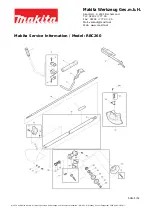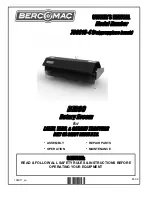
E4PA-N
Ultrasonic Displacement Sensor
5
Operation
Setup and Operating Procedure
The E4PA-N is factory-set for the decrease mode for analog output characteristics and for the maximum sensing range. These settings enable
scaling with the connected device (e.g., the K3NX). In this case, only step 4 is required.
To change the analog output range, follow steps 1 to 4 below.
1. Preparation for Setup
Note:
Do not insert the Setting Plug yet. It must be inserted within
five minutes after the power is turned ON, however, or the set-
up will not be possible. If that happens, power up again and
start over.
2. Setting Sensing Range
3. Setting Analog Output Characteristics
Mode
4. Setting Temperature Compensation Mode
Note:
If the reflection from the Sensor is extremely weak, or if the sensing object is set outside of the sensing range, the error indicator (red) will
flash to show that the sensing range is not accurately set. If the Setting Plug is left removed for five minutes or longer, temperature com-
pensation will be disabled (status before setting).
If it becomes necessary to change the settings for step 2 (Sensing Range) or step 3 (Analog Output Characteristics Mode) after steps 1 through
4 have been completed, the contents of all the previous settings will be remembered, so only the items to be changed need to be reset. Go
through the steps in order, from 1 to 4, and reset only the items to be changed.
Step
Setting/Operation
1
Remove the Setting Plug.
2
Turn ON the power.
(See note.)
3
Proceed to Step 2
Setting Sensing Range.
Step
Setting/Operation
1
Place the sensing object at the nearest point within the sensing
range.
2
Insert the Setting Plug at the A1
position. (Align the notch on the
Sensor with the A1 triangular mark
on the Setting Plug.)
The power indicator (green) and
the A1 RUN indicator (yellow) with
flash, showing that the near dis-
tance has been correctly set.
3
Remove the Setting Plug. (In this
state, the setting is confirmed and
recorded.)
4
Place the sensing object at the farthest point within the sensing
range.
5
Insert the Setting Plug at the A2
position. (Align the notch on the
Sensor with the A2 triangular mark
on the Setting Plug.)
The power indicator (green) and
the A2 RUN indicator (yellow) will
flash, showing that the far distance
has been correctly set.
6
Remove the Setting Plug. (In this
state, the setting is confirmed and
recorded.)
7
Proceed to Step 3
Setting Analog Output Characteristics Mode.
50 mm (for E4PA-LS50-M1-N)
Sensing object
A1
A2
E3
E2
A1 position
500 mm (for E4PA-LS50-M1-N)
Sensing object
A2 position
A1
A2
E3
E2
Step
Setting/Operation
1
Insert the Setting Plug at the E2/E3
position. (Align the notch on the Sen-
sor with the E2/E3 triangular mark on
the Setting Plug.)
Note:
Check the input impedance of connected devices
and the analog output in
Ratings/Characteristics
(see
page 2
).
2
After the analog output characteristics have been set, remove the
Setting Plug.
3
Proceed to Step 4
Setting Temperature Compensation Mode.
Step
Setting/Operation
1
Insert the Setting Plug at the T posi-
tion. (Align the notch on the Sensor
with the T triangular mark on the Set-
ting Plug.)
2
Leave the Setting Plug inserted where it is. (This completes the set-
up.)
Note:
To maintain the temperature compensation, leave
the Setting Plug inserted during operation. If it is re-
moved from the E4PA, the temperature compensa-
tion will be disabled.
E2/E3 position
A1
A2
E3
E2
A1
A2
E3
E2
A1
A2
E3
E2
A2 RUN indicator (yellow) flashing:
●
Analog output characteristics: Decrease mode
In this mode, the analog output decreases
(20 to 4 mA/10 to 0 V) as the
sensing object nears the E4PA
within the sensing range.
A1 RUN indicator (yellow) flashing:
●
Analog output characteristics: Increase mode
A1 and A2 RUN indicators (yellow) flashing at the same time:
●
Analog output characteristics: Output from 0 mm
In this mode, the analog output
increases (4 to 20 mA/0 to 10 V)
as the sensing object nears the
E4PA within the sensing range.
In this mode, the analog output
decreases (20 to 4 mA/10 to 0 V)
as the sensing object nears the
E4PA between the farthest
sensing point and 0 mm.
The mode changes when the Setting Plug
is reinserted at the E2/E3 position.
The mode changes when the Setting Plug
is reinserted at the E2/E3 position.
T position
Downloaded from
Downloaded from
Downloaded from
Downloaded from
Downloaded from



























